 February 15, 2018 John E. Ross, KD8IDJ, Editor
| ||||||
ARRL Headquarters Will Be Closed on Presidents' Day: ARRL Headquarters will be closed on Monday, February 19 -- Presidents' Day. There will be no W1AW code practice or bulletin transmission on February 19. ARRL Headquarters will re-open at 8 AM (ET) on Tuesday, February 20. "Awesome" Activity for the 2018 ARRL International Grid Chase "On-the-air activity for the 2018 ARRL International Grid Chase (IGC) has been awesome!" ARRL Contest Branch Manager Bart Jahnke, W9JJ, said this week. "The year also began with DXpeditions, as well as several contests at both HF and VHF, to boost numbers. Facebook and social media (Facebook, Twitter #ICG) are abuzz with chatter about the event, the excitement, the grids worked."
"The leader board reporting system continues to evolve, with much helpful participant feedback," Jahnke said. That user input is improving how ARRL reports participation. "From the statistics, it's clear that during this period of low sunspots and low winter E-skip and F2, most of the activity on the mid-to-lower bands is digital modes," Jahnke said. "As we get into the summer E-skip season, we expect to see activity above 15 meters begin its ascent in the totals."
Jahnke said it's apparent that participants are taking advantage of CW (and FT8 and other digital modes) on HF to overcome some of the weakened propagation on the low- to medium-frequency bands, and of FT8, JT65, and FSK144/MSK144 on 6 meters and above to rack up impressive totals. "Not to be outdone, in comparison to overall band totals, phone contacts on 80, 40, 20, and 17 meters are strong, and 2-meter and 70-centimeter contacts were strong in January as well," Jahnke added. Several contests in January, including the ARRL RTTY Roundup and ARRL January VHF Contest contributed to these strong phone and digital numbers. During January, IGC-eligible contacts matched in Logbook of The World (LoTW) topped 22,000 on 40 meters and 23,000 on 20 meters -- the two bands with the greatest activity -- with nearly half the contacts being made on digital modes in both bands. On the new 630-meter band, 31 IGC-eligible contacts turned up in LoTW. ARRL Announces Mobile DXCC Operating Award This week, ARRL announced a Mobile DXCC Operating Award, available to radio amateurs who have contacted at least 100 DXCC entities from a working vehicle, with antennas and power source capable of operating while in motion. ARRL Radiosport Manager Norm Fusaro, W3IZ, advised those pursuing the award to put safety first. "Distracted driving is a serious concern, so we hope all mobile operators exercise care when operating from a moving vehicle," he said.
The Mobile DXCC is a one-time award and is non-endorsable. Contacts made any time in the past do count toward the aware. QSLs are required, but you do not need to submit them. Mobile stations may use any power that is legal in the entity from which they are operating. This award specifically excludes contacts made by aeronautical or maritime mobile stations. You do not have to be an ARRL member to qualify for this award. Because this award is similar to the QRP DXCC Operating Award, ARRL has redesigned the QRP DXCC Certificate so that the two awards complement one another. Operators who hold the QRP DXCC award may apply for the new-style certificate with the original date of issue printed on the certificate, but you do not have to re-submit QSL cards or a log. All certificates are $16. 3Y0I Bouvet Island DXpedition Revived Peripatetic Polish DXpeditioner Dom Grzyb, 3Z9DX, and four other operators announced over the weekend that their postponed plans to mount the 3Y0I DXpedition to Bouvet Island are back on. This comes "Our trip, planned originally at the end of 2017, was canceled at the request of the organizers of the 3Y0Z expedition," an announcement said. "Due to the cancellation by the [3Y0Z] organizers, we are now returning to the implementation of our project and preparations for our trip as a matter of urgency."
The 3Y0I team said it has chartered a seagoing yacht adapted for extreme weather conditions to make the 12-day, 2,800-nautical mile trip from South Africa to Bouvet Island. The team anticipates operating for about 2 weeks. The participants have financed the trip out of their own pockets. In addition to 3Z9DX, the 3Y0I operators will include Stanislaw, SQ8X; Leszek, SP3DOI; Branko, YU4DX, and Frans, J69DX. The Doctor Will See You Now! "Vacuum Tubes" is the topic of the new (February 8) episode of the "ARRL The Doctor is In" podcast. Listen...and learn! Sponsored by DX Engineering, "ARRL The Doctor is In" is an informative discussion of all things technical. Listen on your computer, tablet, or smartphone -- whenever and wherever you like!
Enjoy "ARRL The Doctor is In" on Apple iTunes, or by using your iPhone or iPad podcast app (just search for "ARRL The Doctor is In"). You can also listen online at Blubrry, or at Stitcher (free registration required, or browse the site as a guest) and through the free Stitcher app for iOS, Kindle, or Android devices. If you've never listened to a podcast before, download our beginner's guide. ARRL Receives Byrd Antarctic Expedition Morse Key, Historical Materials ARRL has received from Lynn Burlingame, N7CFO, the donation of a Kilbourne & Clark Morse key that the late Howard Mason (1ID, 7BU, and K7QB) used to let the world know that Rear Admiral Richard Byrd and his crew had overflown the South Pole for the first time during Byrd's 1928 - 1930 Antarctic expedition. Mason and his 80 colleagues were awarded Congressional Gold Medals for their efforts in establishing the Antarctic outpost "Little America," the first of a series of bases bearing that name.
Mason continued to use the key in his ensuing and varied endeavors. Prior to his death in 1996, he gave the key to Burlingame of Bellevue,
Washington, a collector and biographer who generously donated it to the ARRL Heritage Museum. The museum plans to display the key as part of an exhibition tentatively scheduled to open on April 15. The exhibition also will include a large wooden key, engraved with "WFA" and bearing the signatures of some expedition members. Also on display will be a first edition of Admiral Byrd's book Little America: Aerial Exploration in the Antarctic, the Flight to the South Pole and an album of contemporary newspaper clippings, both part of the Burlingame donation. A complete narrative will be posted to the Heritage Museum Section of the ARRL website. The key and the Little America radio operators can be seen in action in an original film available on YouTube, which offers a first look of the towers erected there (at the 15:00 mark). -- Thanks to Michael Marinaro, WN1M, ARRL Volunteer Staff Historian/Archivist Z60A Operation Has Moved Kosovo Down the Most-Wanted List a Few Notches What a difference a week makes! The ongoing Z60A special operation to celebrate the addition of Kosovo to the DXCC List and Kosovo's 10th anniversary of independence appears to have put a big dent in demand for the new entity, which briefly stood at the top of the heap. According to Club Log's DXCC Most-Wanted List as of February 14, the Republic of Kosovo now is in the #8 position after rocketing into the #1 slot when it became a DXCC entity on January 21. The #2 and #3 slots are held by Bouvet Island and Crozet Island, respectively, while North Korea is back at #1.
With two stations on the air, Z60A operations are expected to continue through February 19 and will include participation in the ARRL International DX Contest (CW) over the February 17 - 18 weekend. Z60A continues to attract huge pileups. (Z60A may be operating split; listen to the operators' instructions.) "The departing German/Slovenian team of DJ5IW, DM5TI, DD2ML, and S57AW did a fantastic job while introducing the data modes, RTTY and FT8," said Martti Laine, OH2BH, a longtime supporter of Amateur Radio in Kosovo. "They made up to 10,000 digital QSOs, with the Z60A total now reaching 70,000." The Z60A location at the headquarters of Kosovo's IARU Member Society SHRAK was in SSB mode, helmed by local Z6 operators; the call sign also was active during the CQ World-Wide WPX RTTY event this past weekend. Local manmade noise continues to hamper Z60A operation. "Many are wondering why it isn't possible to eliminate the noise by setting up camp in a quiet open field," Laine said. "The underlying fact is that Pristina is more than 650 meters above sea level, and this winter has been particularly cold, with -13 °C temperatures experienced during the activation period."
Laine said the celebratory Z60A operation has served to bring in operators from as many other countries as possible, helping hams in Kosovo to "expand their network of friends." Hans Blondeel Timmerman, PB2T, pointed out in the recent edition of the European DX Foundation (EUDXF) newsletter that Amateur Radio had been nearly nonexistent for more than 25 years and all radio equipment was confiscated. This has created a current need for affordable used gear. "Please consider [donating] one of your spare radios that is only catching dust in your garage," he said. Those wishing to donate to support Amateur Radio in Kosovo should contact Wayne Mills, N7NG. -- Thanks to Martti Laine, OH2BH Radio Amateur Named as Next President of Harvard University Lawrence S. Bacow, KA1FZQ, of Brookline, Massachusetts, has been selected to become the 29th president of Harvard University, the home of W1AF. Selected from among a field of some 700 candidates, Bacow will take office on July 1, succeeding Drew Faust.
The son of immigrants and holding three degrees from Harvard, including a Ph.D. in public policy, Bacow was a longtime faculty leader at MIT, his undergraduate alma mater, where he rose to the position of chancellor. He also served for a decade as the President of Tufts University. Currently, he is the Hauser Leader-in-Residence at the Harvard Kennedy School's Center for Public Leadership. In a Temple Emmanuel From the Gates newsletter commentary last November, Bacow confessed to being an "uber nerd" while he was growing up in Pontiac, Michigan. "I was a ham radio operator. I used to get my kicks building radios out of Heathkits -- some of you are old enough to remember them." Bacow said his reading outside of school was "confined to Popular Science, Popular Mechanics, Scientific American and some obscure magazines known only to fellow ham radio operators, called QST and 73." ARRL Roanoke Division Vice Director Bill Morine, N2COP, said he once worked Bacow on 2 meters when the academician was sailing off the coast of Maine many years ago, after Bacow had been named the president of Tufts University, Morine's alma mater. "Larry's a great guy and is supportive of ham radio," Morine told ARRL. Bacow's father, Mitchell, also was a radio amateur -- W8JYZ and N4MB. He died in 2007. -- Thanks to Harvard University and to Bill Morine, N2COP Sisterhood of Amateur Radio Supports Girl Scouts in Obtaining Radio Wireless Patch The Sisterhood of Amateur Radio (SOAR), in conjunction with the Girl Scout Council of Southern Nevada, hosted a Radio and Wireless Tech Field Day on February 3 in Las Vegas, Nevada, for more than 60 girls and their adult chaperones.
In addition to hands-on activities, the Girl Scouts in Las Vegas also learned about emergency and public service communications, and explored ways wireless technology is used in everyday life and in the workplace. The SOAR participants enthusiastically shared what it means to be an Amateur Radio operator and demonstrated how they can communicate around the world via Amateur Radio. "As a girl-led and girl-focused organization, Girl Scouts of Southern Nevada understands the importance of providing science and engineering educational programming to girls of all ages," said Linda Bridges, Chief of Communications for Girl Scouts of Southern Nevada. "By partnering with SOAR, we look forward to inspiring all Girl Scouts to pursue a lifelong love of communication and global goodwill."
Todd Wilson, WH6DWF, coordinated the *ISLANDS* Conference Server, IRLP 9256, the StarLink System Hub 357087, and DODROPIN 355800, and AllStar, illustrating how Amateur Radio can be used on a tablet or a smart phone, in addition to traditional radio equipment. ARRL Nevada Section Manager John Bigley, N7UR, expressed appreciation for "the contribution of all the participants who took time out of their day to speak to the girls to demonstrate to these young girls what Amateur Radio can do to connect people around the world." -- Thanks to John Bigley, N7UR, and Nevada Section PIO Cathy Etheredge, N7HVN Nominations Now Open for CQ Amateur Radio, Contest, and DX Halls of Fame Nominations will be accepted until March 1 for membership in the CQ Amateur Radio, DX, and CQ Contest halls of fame. The DX and Contest halls of fame recognize radio amateurs who have made major contributions to DXing and contesting, respectively. The CQ Amateur Radio Hall of Fame recognizes those who have made major contributions to Amateur Radio generally, and radio amateurs who have made major contributions to society at large.
Nominations may be made by individuals, clubs, or national organizations. Up to two people may be inducted into the Contest and DX halls of fame each year. There is no set maximum for inductees into the Amateur Radio Hall of Fame. E-mail nominations (preferred) or mail (postmarked by March 1) to Amateur Radio, DX, or Contest Hall of Fame, c/o CQ magazine, 17 West John St., Hicksville, NY 11801 USA. Be sure to specify which hall of fame the nomination is for. Inductees typically are announced immediately prior to Hamvention® in May. In Brief...
The K7RA Solar Update Tad Cook, K7RA, Seattle, reports: We should be seeing some enhanced propagation due to a current modest rise in solar activity, which may increase further over the next few days. Solar activity increased over the February 8-14 reporting week. Average daily sunspot number rose from 10.3 to 24, while average daily solar flux increased from 72.5 to 77.4. Geomagnetic indicators were quiet, with average planetary A index changing from 4.4 to 4.1, and average mid-latitude A index going from 3.6 to 3.
Predicted planetary A index is 28, 20, and 15 on February 15-17; 10 on February 18-19; 8 on February 20-21; 5 on February 22-March 3; 8 on March 4; 5 on March 5-13; 8, 15, 12, 10, 5, 8, 10, and 8 on March 14-21; 5 on March 22-30, and 8 on March 31. February 4 was the last day that a new sunspot appeared. Before that, February 2 showed a new spot. Sunspot numbers for February 8-14 were 22, 23, 35, 24, 26, 20, and 18, with a mean of 24. The 10.7-centimeter flux was 77.5, 78.1, 78.2, 78.2, 78.6, 75.9, and 75.3, with a mean of 77.4. Estimated planetary A indices were 4, 5, 7, 3, 4, 3, and 3, with a mean of 4.1. Estimated mid-latitude A indices were 2, 2, 7, 2, 3, 3, and 2, with a mean of 3. Send me your reports and observations. Just Ahead in Radiosport
See the ARRL Contest Calendar for more information. For in-depth reporting on Amateur Radio contesting, subscribe to The ARRL Contest Update via your ARRL member profile e-mail preferences. Upcoming ARRL Section, State, and Division Conventions
Find conventions and hamfests in your area.
. .
Subscribe to...
Free of charge to ARRL members...
Find ARRL on Facebook! Follow us on Twitter, Snapchat @ARRLHQ, and Instagram! | ||||||
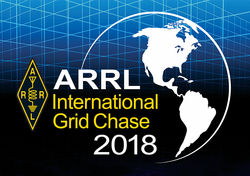 Jahnke said the statistics show the highest overall activity on 40 and 20 meters -- not surprising in the winter -- and especially strong digital activity. He expects phone and CW activity to perk up this month and next, with the ARRL International DX Contest CW weekend February 17 - 18, and the phone weekend March 3 - 4. He also anticipates that February's statistics will come on strong as participants re-work January grid squares to boost their February scores. As of the January activity upload deadline of February 10 at 2359 UTC, some 23,300 station sites were active in the IGC.
Jahnke said the statistics show the highest overall activity on 40 and 20 meters -- not surprising in the winter -- and especially strong digital activity. He expects phone and CW activity to perk up this month and next, with the ARRL International DX Contest CW weekend February 17 - 18, and the phone weekend March 3 - 4. He also anticipates that February's statistics will come on strong as participants re-work January grid squares to boost their February scores. As of the January activity upload deadline of February 10 at 2359 UTC, some 23,300 station sites were active in the IGC.
 Full, official details are on the Mobile DXCC Operating Award page.
Full, official details are on the Mobile DXCC Operating Award page..JPG) as the
as the .jpg) DX-World has reported that the 3Y0I license has been renewed and a landing permit -- good for 1 year -- issued by the Norwegian Polar Institute. While no specific dates for the DXpedition have been announced, the 3Y0I team said its plans call for operating during the subantarctic summer, which suggests they could be on the air late this year.
DX-World has reported that the 3Y0I license has been renewed and a landing permit -- good for 1 year -- issued by the Norwegian Polar Institute. While no specific dates for the DXpedition have been announced, the 3Y0I team said its plans call for operating during the subantarctic summer, which suggests they could be on the air late this year. Every 2 weeks, your host, QST Editor-in-Chief Steve Ford, WB8IMY, and the Doctor himself, Joel Hallas, W1ZR, will discuss a broad range of technical topics. You can also e-mail your questions to
Every 2 weeks, your host, QST Editor-in-Chief Steve Ford, WB8IMY, and the Doctor himself, Joel Hallas, W1ZR, will discuss a broad range of technical topics. You can also e-mail your questions to 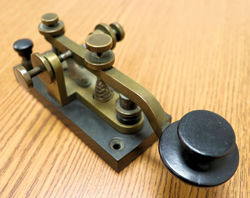 Mason was a lifelong radio amateur from Seattle who was an active ARRL National Traffic System participant and manager. In 1923, he relocated to Connecticut to serve as an editor of the ARRL's journal, QST. Mason's first polar experience was as a radio operator with the Wilkins-Detroit News Arctic expedition that traversed the North Pole by air in 1928. This led to his selection by Byrd to be a radio engineer with his first Antarctic expedition. Mason was co-operator of Little America's base radio station,WFA, used to keep in contact with the rest of the world.
Mason was a lifelong radio amateur from Seattle who was an active ARRL National Traffic System participant and manager. In 1923, he relocated to Connecticut to serve as an editor of the ARRL's journal, QST. Mason's first polar experience was as a radio operator with the Wilkins-Detroit News Arctic expedition that traversed the North Pole by air in 1928. This led to his selection by Byrd to be a radio engineer with his first Antarctic expedition. Mason was co-operator of Little America's base radio station,WFA, used to keep in contact with the rest of the world..jpg)
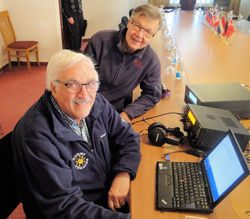
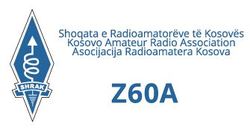 Considering that Kosovo will remain on the DXCC horizon and that this is the very first activation, Laine added, "Not all noise and other challenges are expected to be resolved." A remote location may be operational within the week, however. Testing indicated "dramatically better" reception than in Pristina.
Considering that Kosovo will remain on the DXCC horizon and that this is the very first activation, Laine added, "Not all noise and other challenges are expected to be resolved." A remote location may be operational within the week, however. Testing indicated "dramatically better" reception than in Pristina..jpg) "Larry Bacow is one of the most accomplished, admired, insightful, and effective leaders in American higher education," said William F. Lee, chair of the Presidential Search Committee, in making the announcement over the weekend. "This is a pivotal moment for higher education -- a time full of extraordinary possibilities to pursue new knowledge, enhance education, and serve society, but also a time when the singular value of higher education and university research has too often been challenged and called into doubt. Such a time calls for skillful leadership, strategic thinking, and disciplined execution. Larry will provide just that."
"Larry Bacow is one of the most accomplished, admired, insightful, and effective leaders in American higher education," said William F. Lee, chair of the Presidential Search Committee, in making the announcement over the weekend. "This is a pivotal moment for higher education -- a time full of extraordinary possibilities to pursue new knowledge, enhance education, and serve society, but also a time when the singular value of higher education and university research has too often been challenged and called into doubt. Such a time calls for skillful leadership, strategic thinking, and disciplined execution. Larry will provide just that."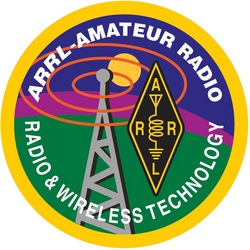 ARRL began offering its
ARRL began offering its .JPG) Highlights of the event were spelling out their name in Morse code and hearing it via a code practice oscillator, learning about antenna directivity and participating in a foxhunt, and actually talking on the radio as well as using Voice over Internet Protocol (VoIP) modes.
Highlights of the event were spelling out their name in Morse code and hearing it via a code practice oscillator, learning about antenna directivity and participating in a foxhunt, and actually talking on the radio as well as using Voice over Internet Protocol (VoIP) modes.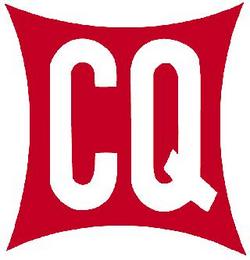 "The activities and accomplishments that qualify one for membership in these elite groups involve considerable personal sacrifice and can usually be described by the phrase 'above and beyond the call of duty,'" the nomination announcement said.
"The activities and accomplishments that qualify one for membership in these elite groups involve considerable personal sacrifice and can usually be described by the phrase 'above and beyond the call of duty,'" the nomination announcement said.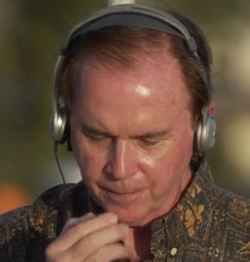 A recent NBC News Left Field report asserted that hams "could save our lives" in a disaster. A team from NBC News' nascent digital news unit Left Field was in Hawaii to visit with some radio amateurs to produce a report when the false nuclear missile alert happened on January 13. Left Field's report points out how much we rely on cell phones and 21st century technology...and what we would do if these suddenly were no longer available. Amateur Radio operators "are standing at the ready and may save us all," NBC Left Field said in the tease to its
A recent NBC News Left Field report asserted that hams "could save our lives" in a disaster. A team from NBC News' nascent digital news unit Left Field was in Hawaii to visit with some radio amateurs to produce a report when the false nuclear missile alert happened on January 13. Left Field's report points out how much we rely on cell phones and 21st century technology...and what we would do if these suddenly were no longer available. Amateur Radio operators "are standing at the ready and may save us all," NBC Left Field said in the tease to its 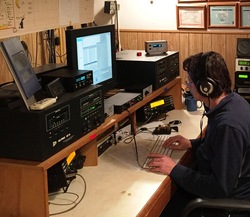 The
The 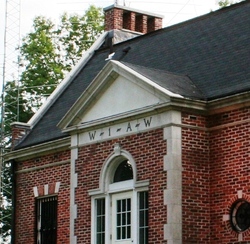 W1AW/7 will be on the air from the
W1AW/7 will be on the air from the 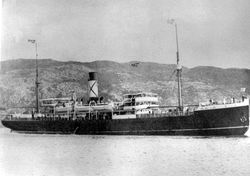 The Society of Newfoundland Radio Amateurs (SONRA) will mark the centenary of the SS Florizel tragedy with a special event. "Faces of the Florizel" is set for February 23-24. On February 23, 1918, the Florizel left St. John's, Newfoundland on what was supposed to be a routine trip to Halifax, Nova Scotia, and then to New York City. Blizzard conditions and miscommunication between the bridge and the engine room caused the vessel to go aground on the rocks near Cappahayden, Newfoundland. Of the 137 on board, only 44 survived. In the early hours of February 24, the Florizel's SOS was received at the HM Wireless Station, the current site of the
The Society of Newfoundland Radio Amateurs (SONRA) will mark the centenary of the SS Florizel tragedy with a special event. "Faces of the Florizel" is set for February 23-24. On February 23, 1918, the Florizel left St. John's, Newfoundland on what was supposed to be a routine trip to Halifax, Nova Scotia, and then to New York City. Blizzard conditions and miscommunication between the bridge and the engine room caused the vessel to go aground on the rocks near Cappahayden, Newfoundland. Of the 137 on board, only 44 survived. In the early hours of February 24, the Florizel's SOS was received at the HM Wireless Station, the current site of the  The NCVEC Question Pool Committee has released the latest
The NCVEC Question Pool Committee has released the latest 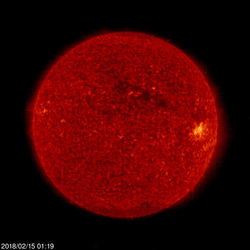 Predicted solar flux is 75, 74, 73, and 70; on February 15-18; 69 on February 19-28; 72 on March 1; 75 on March 2-3; 78 on March 4-13; 76 on March 14-15; 72 on March 16; 70 on March 17-21; 69 on March 22-27; 72 on March 28; 75 on March 29-30, and 78 on March 31.
Predicted solar flux is 75, 74, 73, and 70; on February 15-18; 69 on February 19-28; 72 on March 1; 75 on March 2-3; 78 on March 4-13; 76 on March 14-15; 72 on March 16; 70 on March 17-21; 69 on March 22-27; 72 on March 28; 75 on March 29-30, and 78 on March 31.







